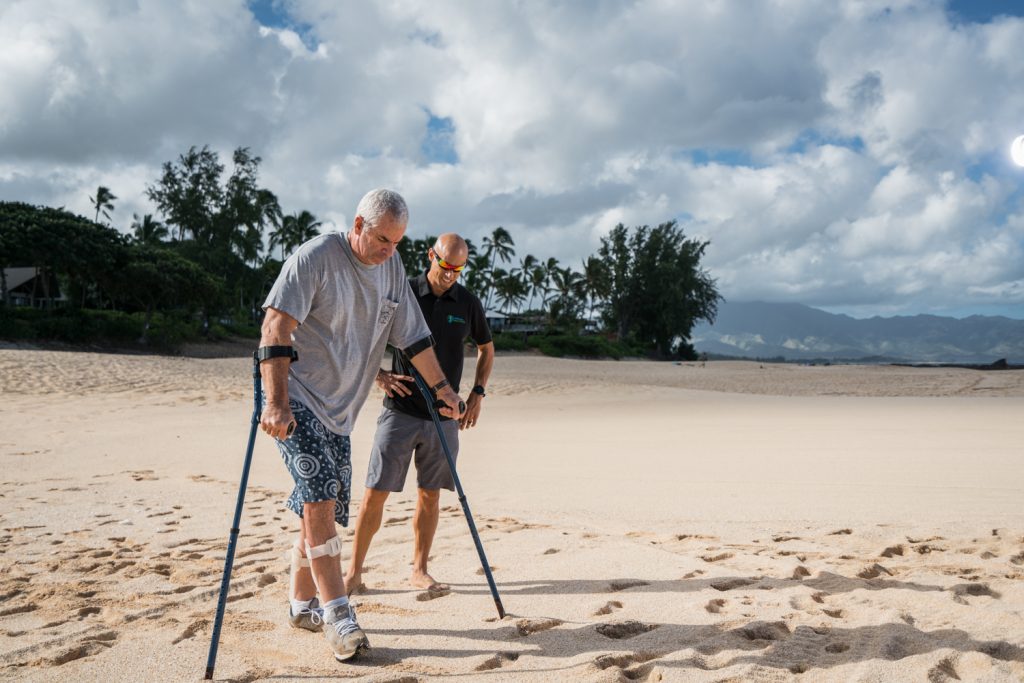We treat all neurological conditions that impact function, including stroke and brain injury. Our main focus is a consistent and aggressive weight-bearing approach that provides the best chance for motor and sensory return. Client goals are also carefully considered when creating treatment plans. Training programs are customized to each individual’s unique needs.
Neurological Injury Recovery

Call now for more info or for a free consultation.
Warning Signs of a Stroke and How to Respond
Strokes are a frightening and often debilitating malady that can have long-lasting effects on those who suffer from them. Caused by blockages caused by clots in the blood vessels of the brain, they result in a lack of oxygen that can cause a number of deficiencies, including neurological damage, face drooping, weakness in the extremities, and even death. Fortunately, the symptoms of strokes can often be reversed through rehabilitation and physical therapy—as long as the strokes are treated quickly enough so that the brain is not deprived of oxygen for an extended period of time. This is why it is extremely important for people at high risk of strokes (and their caretakers) to be aware of symptoms and early warning signs.
Most of the symptoms of strokes are neurological in nature, which makes sense, since the brain is the neurological center of the body and is suffering from a lack of blood and oxygen during a stroke. The most common early warning symptoms include face drooping, arm weakness, and speech slurring (or the loss of speech). Stroke.org suggests that you remember these warning signs with the acronym FAST: Face drooping, Arm weakness, Speech, Time to call 911.
However, there are a number of other symptoms and warning signs that can help you identify a potential stroke victim. These include the sudden onset of numbness in the extremities, particularly on one side of the body; difficulty walking or balancing; difficult seeing; sudden and extreme confusion, and the onset of a severe headache. While the onset of one of these symptoms might not indicate an imminent or ongoing stroke (for instance, many people suffer severe headaches or have difficulty seeing even though they aren’t in the midst of a stroke), a combination of two or more of these symptoms should be considered a warning sign—particularly if there is numbness or loss of coordination in one side of the body.
If you suspect that you or someone near you is having a stroke, it is vital that you call 911 and get emergency assistance as soon as possible. Waiting even a few minutes can be disastrous. That is because, as with other parts of the body, the brain can only survive without oxygen for a few minutes. While a stroke victim may be able to bounce back if the blood clot is broken up after a few minutes, they are less likely to do so if part of their brain is deprived of oxygen for hours at a time.
Once emergency personnel have been reached, they will typically respond by immediately administering anticoagulants and blood thinners to the patient in hopes of breaking up the clot and restoring blood flow to the affected area of the brain. If this is done quickly enough, there is a good chance that some or even all neurological capabilities can be restored through targeted physical therapy and rehabilitation.
If you or someone you know is suffering from symptoms of a stroke, the best thing you can do is to call for medical assistance immediately. Remember, speed is your greatest ally when it comes to treating a stroke, so keep an eye out for warning signs, and act FAST if you see them!
